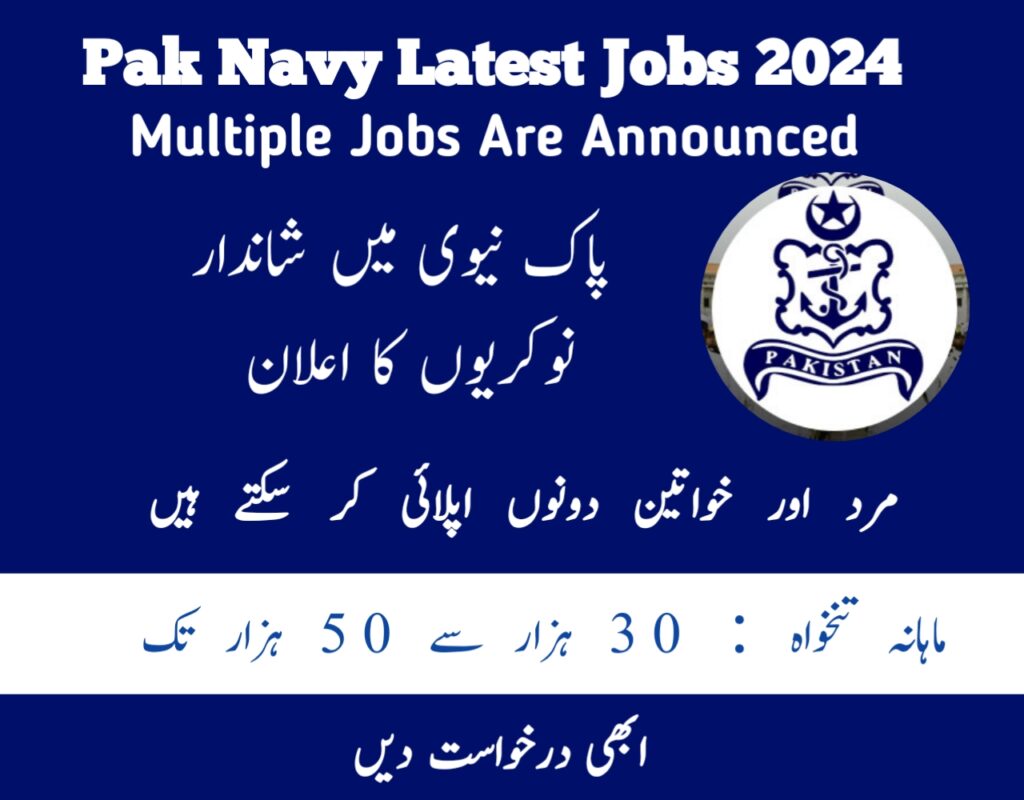Introduction:
In the realm of maritime defense, the Pakistan Navy stands as a stalwart guardian, securing the nation’s maritime interests, defending its shores, and projecting power across the seas. Established in 1947, the Pakistan Navy has evolved into a formidable maritime force, equipped with modern technology, skilled personnel, and a strategic vision aimed at safeguarding Pakistan’s maritime borders and promoting regional stability. This essay delves into the structure, capabilities, and significance of the Pakistan Navy, exploring its role in the defense architecture of Pakistan and its contributions to regional security.
Historical Background:
The genesis of the Pakistan Navy traces back to the partition of British India in 1947 when Pakistan emerged as an independent state. Initially, the newly formed navy inherited few assets and faced numerous challenges, including the division of assets with India and the need to establish its operational infrastructure. Despite these hurdles, the Pakistan Navy steadily expanded its capabilities through strategic partnerships, acquisitions, and indigenous development.
Organization and Structure:
The Pakistan Navy is organized into various operational and support commands, each playing a crucial role in ensuring maritime security and operational readiness. The operational commands include the Surface Fleet, Submarine Command, Naval Aviation, Maritime Security Agency (MSA), and Special Services Group Navy (SSGN), responsible for conventional warfare, submarine operations, aerial surveillance, maritime law enforcement, and special operations, respectively. Additionally, the support commands encompass logistics, training, and maintenance, facilitating sustained operations and personnel development.
Naval Assets:
The Pakistan Navy boasts a diverse fleet of surface vessels, submarines, aircraft, and support vessels, tailored to meet the evolving challenges of maritime security and defense. At the core of its fleet are modern surface combatants, including frigates, corvettes, and missile boats armed with advanced weaponry and sensor systems. Notably, the induction of Chinese-built Type 054A frigates and Azmat-class fast attack craft has significantly enhanced the navy’s anti-surface and anti-submarine warfare capabilities. 
In the realm of submarine warfare, the Pakistan Navy operates a fleet of conventional and air-independent propulsion (AIP) submarines, capable of conducting clandestine operations and strategic deterrence. The Agosta 90B and Khalid-class submarines, equipped with advanced torpedoes and cruise missiles, serve as potent assets in the navy’s underwater arsenal, ensuring maritime dominance and deterrence against potential adversaries.
Naval Aviation:
Naval aviation plays a pivotal role in extending the Pakistan Navy’s reach and surveillance capabilities beyond the horizon. The naval aviation wing comprises fixed-wing aircraft, helicopters, and unmanned aerial vehicles (UAVs), tasked with maritime patrol, anti-submarine warfare, search and rescue, and aerial reconnaissance. The induction of modern platforms such as the ATR-72MP maritime patrol aircraft and Z-9EC anti-submarine warfare helicopters has bolstered the navy’s maritime surveillance and response capabilities, enabling swift and effective action against maritime threats.
Maritime Security and Law Enforcement:
Beyond traditional military operations, the Pakistan Navy assumes a crucial role in maritime security and law enforcement, safeguarding Pakistan’s Exclusive Economic Zone (EEZ) and combating maritime piracy, smuggling, and illegal fishing activities. The Maritime Security Agency (MSA), a paramilitary force under the Pakistan Navy’s operational control, patrols coastal waters, conducts search and rescue operations, and enforces maritime laws to ensure compliance with international regulations and protect national interests at sea.
Strategic Partnerships and International Cooperation:
Recognizing the interconnected nature of maritime security, the Pakistan Navy actively engages in bilateral and multilateral cooperation initiatives to enhance interoperability, exchange best practices, and address common maritime challenges. Through joint exercises, training programs, and information-sharing agreements, the navy collaborates with regional and international partners, including the United States, China, Turkey, and Gulf Cooperation Council (GCC) countries, to promote maritime security, stability, and cooperation in the Indian Ocean region.
Human Capital Development:
Central to the Pakistan Navy’s operational effectiveness is its emphasis on human capital development, nurturing a skilled and professional cadre of sailors, officers, and naval aviators. Through rigorous training programs, professional education, and career development opportunities, the navy cultivates a culture of excellence, leadership, and innovation among its personnel, ensuring readiness to face diverse operational scenarios and technological advancements in maritime warfare.
Role in National Security:
As a vital component of Pakistan’s national security apparatus, the Pakistan Navy plays a multifaceted role in protecting the country’s maritime interests, safeguarding vital sea lanes of communication, and contributing to regional stability. In an era marked by geopolitical competition and maritime disputes, the navy’s presence and capabilities serve as a deterrent against external aggression, coercion, and maritime terrorism, thereby bolstering Pakistan’s sovereignty and national security.
Challenges and Future Prospects:
Despite its achievements, the Pakistan Navy faces several challenges, including maritime threats from state and non-state actors, resource constraints, and technological obsolescence. To address these challenges, the navy continues to invest in modernization initiatives, indigenous shipbuilding programs, and capacity-building efforts to enhance its operational capabilities and maintain maritime superiority.
Looking ahead, the Pakistan Navy remains committed to its mission of safeguarding Pakistan’s maritime interests, fostering regional cooperation, and contributing to global maritime security efforts. Through strategic foresight, technological innovation, and international partnerships, the navy aims to adapt to emerging threats, protect maritime commons, and uphold Pakistan’s status as a responsible maritime stakeholder in the Indo-Pacific region.
Conclusion:
In conclusion, the Pakistan Navy stands as a formidable maritime force, equipped with modern assets, skilled personnel, and a strategic vision aimed at safeguarding Pakistan’s maritime interests and promoting regional stability. From its humble beginnings to its current stature, the navy’s journey exemplifies resilience, professionalism, and dedication in serving the nation’s maritime defense needs. As Pakistan navigates the complex currents of maritime security in the 21st century, the Pakistan Navy remains steadfast in its commitment to protecting the nation’s maritime sovereignty and upholding its proud maritime traditions.
